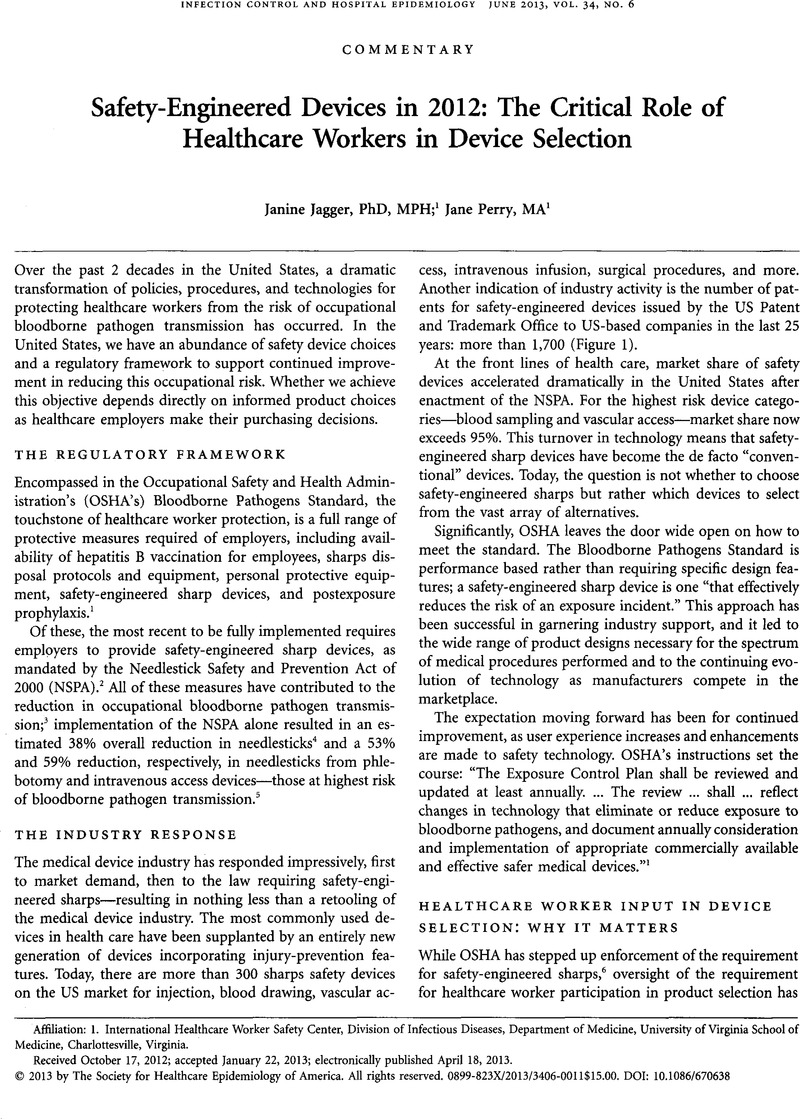Crossref Citations
This article has been cited by the following publications. This list is generated based on data provided by Crossref.
Lavoie, Marie-Claude
Verbeek, Jos H
and
Pahwa, Manisha
2014.
Devices for preventing percutaneous exposure injuries caused by needles in healthcare personnel.
Cochrane Database of Systematic Reviews,
Talbot, Thomas R.
Wang, Deede
Swift, Melanie
St. Jacques, Paul
Johnson, Susan
Brinsko, Vicki
Thayer, Valerie
Dail, Teresa
Feistritzer, Nancye
and
Polancich, Shea
2014.
Implementation of an Enhanced Safety-Engineered Sharp Device Oversight and Bloodborne Pathogen Protection Program at a Large Academic Medical Center.
Infection Control & Hospital Epidemiology,
Vol. 35,
Issue. 11,
p.
1383.
Kanamori, Hajime
Weber, David J.
DiBiase, Lauren M.
Pitman, Karen L.
Consoli, Stephanie A.
Hill, James
Sickbert-Bennett, Emily E.
and
Rutala, William A.
2016.
Impact of Safety-Engineered Devices on the Incidence of Occupational Blood and Body Fluid Exposures Among Healthcare Personnel in an Academic Facility, 2000–2014.
Infection Control & Hospital Epidemiology,
Vol. 37,
Issue. 5,
p.
497.
Haupt, C.
Spaeth, J.
Ahne, T.
Goebel, U.
and
Steinmann, D.
2016.
A Model-Based Product Evaluation Protocol for Comparison of Safety-Engineered Protection Mechanisms of Winged Blood Collection Needles.
Infection Control & Hospital Epidemiology,
Vol. 37,
Issue. 5,
p.
505.
Reddy, Viraj K
Lavoie, Marie-Claude
Verbeek, Jos H
and
Pahwa, Manisha
2017.
Devices for preventing percutaneous exposure injuries caused by needles in healthcare personnel.
Cochrane Database of Systematic Reviews,
Vol. 2017,
Issue. 11,
Ottino, Maria Chiara
Argentero, Andrea
Argentero, Pier Angelo
Garzaro, Giacomo
and
Zotti, Carla Maria
2019.
Needlestick prevention devices: data from hospital surveillance in Piedmont, Italy—comprehensive analysis on needlestick injuries between healthcare workers after the introduction of safety devices.
BMJ Open,
Vol. 9,
Issue. 11,
p.
e030576.



